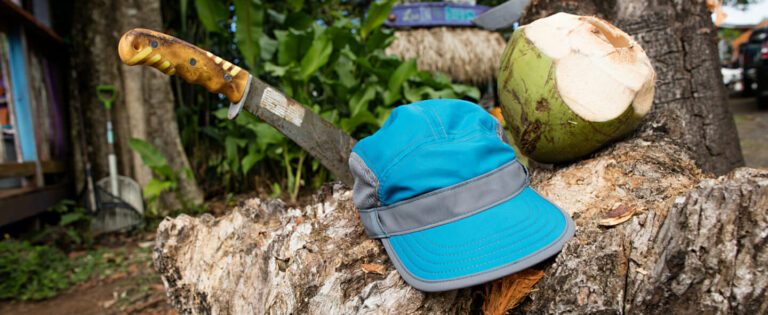It’s six o’clock in the morning in Val Masino, the Italian bit of the Bernina Range, or more precisely, in the southern Bergell mountains. It’s freezing cold as a group of crazies eagerly await the start of “Trofeo Kima”. Among them is one of the absolute legends of the sport, the Spaniard Kilian Jornet. But today we’re not planning on climbing the Piz Badile or one of the valley’s many famous boulders, as you might expect.
Today, we have set out to tackle the “Sentiero Roma”, a high-alpine mountain path with seven spectacular passes as high as 3000 metres. And, this route hardly ever takes you onto a hiking trail. For the most part, the terrain consists of moraine, snowfields and exposed crests as well as challenging climbing sections with fixed ropes and chains for safety. But, you have to keep in mind that we only have a maximum of eleven hours for the 50 kilometres and 4200 metres of gain and loss – a distance a hiker would need five days for. Welcome to skyrunning!

Even though the name seems to suggest otherwise, skyrunning doesn’t refer to running on the clouds, but rather to a more technically challenging, alpine form of trail running. But what is the difference between skyrunning and running on hiking trails? When do you become a sky runner?
From the shepherd to the modern athlete: the history of skyrunning
Moving fast through the mountains is really nothing new. While the motives in the past had more to with the herding of animals on a mountain pasture, harvesting hay or smuggling goods, today it’s much more about enjoying recreational activities in the mountains.
It will come as no surprise that the concept of running up and down mountains for the fun of it was unimaginable for previous generations. After all, the conditions can be pretty harsh in the mountains, to say the least. But that doesn’t mean people didn’t traverse the treacherous terrain of the mountains. As one of the pioneers of sport, the Italian Bruno Brunod from the Aosta Valley, aptly put it: „My ancestors were skyrunners. My grandfather crossed the mountains to get to work. We may be doing it a little faster today, but it’s basically the same as it always has been. Skyrunners have always existed“.

Races in the mountains aren’t new, either. The famous Ben Nevis Race in Scotland has been going strong since 1895. And, as early as the 90s, „races“ were being held on Mont Blanc and the Monte Rosa massif in the Alps.
The inventor of modern skyrunning, Italian mountaineer Marino Giacometti founded the International Skyrunning Federation in 1995. The federation is the governing authority of skyrunning and organises the official skyrunning events, all of which must meet course requirements.
A skyrunning course must be in alpine terrain above 2000 metres, with climbing difficulty not exceeding II° grade (according to the UIAA scale), and must include steep sections of at least 30%. There might be glaciers and snow fields to contend with as well. In other words, skyrunning has distinctive features that clearly distinguish it from both mountain running and modern ultra running. In fact, many of the sport’s most successful athletes have a background in mountain sports rather than classic road running.
Skyrunning disciplines: steep, fast and long
There are now more than two hundred official Skyraces worldwide, all of which can be divided into three very different disciplines:
“Vertical”
As you’ve probably already gathered from the name, “VERTICAL” races take you up. This variant is the most similar to traditional mountain running with key differences being that Vertical races must have a maximum length of five kilometres and vertical climb of 1000 metres (hence the name „Vertical Kilometer“).
The steepest is the „km vertical de Fully“ in France, which is only 2 kilometres long and has 1000m of vertical for you to climb. The fastest athletes can master this ultra-steep route in just over 30 minutes.
„Sky“

The most variable of the skyrunning disciplines is known as „SKY“. Skyraces range from 20 to 49 kilometres in length and must include a minimum gain of 1300 metres. Of course, the skyrunners don’t just run up, they’ve got to run back down as well, so you can imagine their quads are really beat up by the time they reach the finish.
Courses like the „Limone Extreme Skyrace“ at Lake Garda boast several metres of gain and impressive views. The great thing about this race is that it’s not just geared toward professional skyrunners, it’s a great option for skyrunning newbies as well, thanks to the generous cut-off times.
„Ultra“
The longest Skyraces are known as „ULTRA“. These races can be anywhere from 50 to 99 kilometres and have a lot in common with ultra trail races, which are very popular among trail runners. However, like the other races, ULTRA races have to meet certain requirements too: Not only do they have to have a minimum of 3200 metres of gain, but the allotted time must not exceed 16 hours.
Some of these races, such as the Tromso Skyrace in Norway, the Glen Coe Skyline in Scotland and the Trofeo Kima in Italy, also feature challenging stretches of via ferrata, exposed ridges and moderate rock climbing terrain. For these and similar races, you not only have to be an endurance runner, but also have to have the ability to master stretches of terrain with II° grade of difficulty and A/B via ferrata in trail running shoes.
Training for your first Skyrace
What do you think? Wanna give skyrunning a go? You should!

But, before you sign up for a race, you’ve got to make sure you have enough experience in trail running and more specifically in running on single track alpine terrain. There is nothing better than regularly going up to the mountains and running and conquering those technical routes. It doesn’t have to be the north face of the Eiger, but it’s absolutely imperative for you to get used to moving through technical mountain terrain, since Skyraces usually take place on rocky and often treacherous terrain.
To train for the long ascents and descents, you could do a fast hike in the mountains, combining speed hiking on the uphills with trail running on the downhills. Even the pros „hike“ at a fast pace with their hands on their thighs when things get really steep.
You don’t live in the mountains? When you’re not on holiday in the mountains, you can also run up and down the hill behind your house. Or, if all else fails, you can always run the stairs in a multi-storey car park.
In terms of kit, some races allow you to use running or walking poles, which can help you conserve energy and strength, whilst simultaneously providing some extra stability in steep terrain. When it comes to shoes, you should definitely choose a trail running shoe with a grippy outsole that won’t let you down when things get wet. Remember: Your first race doesn’t have to be the most technical route with crazy, exposed ridges and difficult climbs, but after that the sky is the limit!



